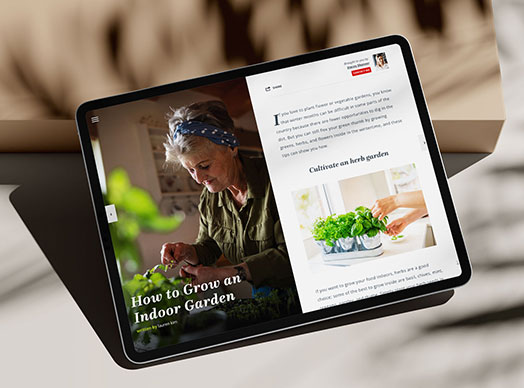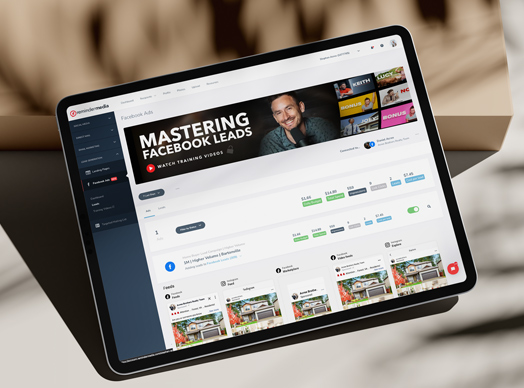Last year, the sales manager at a car dealership told me about an embarrassing episode involving one of his salespeople.
Apparently, this guy’s grandmother came to the dealership and bought a car, not from her grandson, but from another salesperson!
She didn’t dislike her grandson (at least as far as I know). So why didn’t she buy her car from him?
He had never told his grandmother that he worked as a car salesperson. It was a mistake that cost him a commission and a little bit of his pride.
I’m retelling this story not just because it’s a little humorous but because it illustrates the danger of ignoring your social network (also known as your “sphere of influence”). Don’t let something like this happen to you. Follow these steps to nurture your social network so you can develop it into a profitable source of business referrals.
Step 1: Identify your personal social network
Family, friends, old classmates, former coworkers, neighbors, your barber, your health care providers, your children’s teachers—everyone you know has a place in your social network.
- At the center of your network should be the people with whom you have the closest relationships. These key contacts are family members, past clients, or other business professionals you have worked with directly. These are the folks who will go out of their way to actively give you referrals and sing your praises.
- The next level includes people with whom you have good relationships. They are happy to help you grow your business through referrals and positive reviews, but it’s not the first thing on their minds and may require a little prodding.
- The last level includes everyone else on your contact list. This level can include distant relatives or people you’ve worked with but haven’t kept in touch with through the years. They know you and may even like you well enough, but you haven’t developed a long-lasting relationship with them.
Managing your social network will be easier if you can consolidate it into a single list. Look through your email contacts, social media accounts, holiday card list, address book, and any other resources you can think of to create a comprehensive list or database.
Then go through your list and categorize the people based on the strength of your relationship with each person. For example, you might label people at the center of your network as A-list or key contacts. People at the next level would be B-list contacts or your inner circle. The last level is made up of C-list contacts or your outer circle.
Step 2: Develop a contact strategy
If you’re new to your industry, then the first outreach effort is easy. Contact everyone on your list to reestablish contact and to let them know what you are doing. Mention that you would appreciate them thinking of you if they or anyone else they know needs your services—because you don’t want to end up like the poor car salesman from my earlier story.
Beyond that, you’ll want to begin to tailor your approach to each level of your sphere.
People at the center are your most valuable contacts, so you’ll want to reach out to them first and keep coming back to them often. This should be easy because if you have such a close relationship, you probably already talk to them regularly. All you have to do is remind them that referrals help you to grow your business and that you appreciate any recommendation they could give. Help them understand your ideal client, and why they would make a good referral, and you’ll likely increase your chance of receiving one.
The middle level contacts are your next best opportunity to earn referrals, and again, these people require regular attention. Look for ways to start conversations that can lead to a discussion about referrals. You can feel confident spending a little more money on your relationship marketing efforts for this group because your potential return on the investment will support it.
The outer circle of your sphere has long-term value if you can move those in it into the A or B segments. Social media and other cost-effective communications are great ways to stay in front of these people until the opportunity for a more meaningful conversation presents itself.
Regardless of which level you’re targeting, there are a few best practices to incorporate when developing your contact strategy.
- Provide value. Relationships are a two-way street. If all you focus on is what you want, people will quickly feel used.
- Ask for what you want. Don’t just assume people know you want referrals. Go ahead and remind them. And be specific about how they can help.
- Show appreciation. When people are about to pass business your way, make sure to show them what it means to you. A small gift or a handwritten thank-you note can go a long way.
Step 3: Consistently strengthen relationships
Relationship marketing takes work. If you aren’t continually maintaining your efforts, you’re likely to lose touch and miss opportunities. But if you make the effort, you can move your contacts toward the center of your sphere.
With each contact, try to keep track of what is unique to each person. An excellent method for learning about your clients and contacts—even friends you may have had for years—is the F.O.R.D. method. (You can read about that here.) Use what you learn to look for common ground to connect on an emotional level. Then use that common ground to start more conversations, build trust, and motivate them to help you succeed.
Be sure to add new contacts to your list, and regularly evaluate and reclassify existing contacts as needed.
















